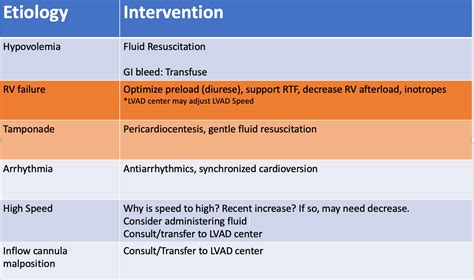lv suction | Lv waveform suction alarm lv suction Once pressure in the LV falls below pressure in the LA, suction effect causes the MV to open and blood flows from the LA into the LV, marking the onset of the rapid early filling phase and the end of the IVRT (Fig. 6). Canon LV-X2. Download software, firmware and manuals and get access to troubleshooting resources for your projector.
0 · cv emcrit suction events
1 · Lv waveform suction alarm
2 · Lv waveform suction
3 · Lv suction alarm
Iespējams izvēlēties sev tīkamāko un pasniedzamā vēstījuma saturam atbilstošāko noformēju no tūkstošiem paraugiem. Protams, savu prezentāciju katram jāveido pašam, bet Canva.com .
Once pressure in the LV falls below pressure in the LA, suction effect causes the MV to open . The left ventricular (LV) waveforms displayed on the Automated Impella .The risk for left ventricular (LV) suction while maintaining adequate perfusion over a range of .Once pressure in the LV falls below pressure in the LA, suction effect causes the MV to open and blood flows from the LA into the LV, marking the onset of the rapid early filling phase and the end of the IVRT (Fig. 6).
cv emcrit suction events
Lv waveform suction alarm
The left ventricular (LV) waveforms displayed on the Automated Impella Controller™ (AIC) can provide information to assist in troubleshooting suction events for patients supported with an Impella® heart pump.Since the diastolic intraventricular pressure gradient pulls blood to the apex, it can be considered a measure of LV suction. In the hypocontractile LV, however, less energy is stored during systole and released during diastole, which in turn results in impaired LV suction . In this situation, the LV filling entirely depends on the elevated .
Suction Events. Collapse of the LV with interventricular septal deviation to the left due to negative pressure from continuous flow LVAD; Risk factors: anything that decreases LV preload, malpositioned inflow cannula directed towards septum; Suction events can cause arrhythmias, low LVAD output, and hemodynamic instability.
Suction of the left ventricle can lead to potentially life‐threatening events in left ventricular assist device (LVAD) patients. With the resolution of currently available clinical LVAD monitoring healthcare professionals are unable to evaluate patients’ suction occurrences in detail.
The risk for left ventricular (LV) suction while maintaining adequate perfusion over a range of physiologic conditions during continuous flow LV assist device (LVAD) support is a significant clinical concern. To address this challenge, we developed a suction prevention and physiologic control (SPPC) algorithm for use with axial and centrifugal .Using echo-dynamography newly developed, physiological and clinical features of left ventricular suction during rapid filling phase were investigated. The suction developed by inhaling inflow blood by two ways. LV systolic twisting deformation is one mechanism by which potential energy is stored during ejection, to be better released during diastole and contribute to the creation of suction.
Left ventricular untwisting generates an early diastolic intraventricular pressure gradient (DIVPG) than can be quantified by echocardiography. We sought to confirm the quantitative relationship between peak untwisting rate and peak DIVPG in .
The risk for left ventricular (LV) suction during left ventricular assist devices (LVAD) support has been a clinical concern. Current development efforts suggest LVAD suction prevention and physiologic control algorithms may require chronic implantation of pressure or flow sensors, which can be unreliable because of baseline drift and short .Once pressure in the LV falls below pressure in the LA, suction effect causes the MV to open and blood flows from the LA into the LV, marking the onset of the rapid early filling phase and the end of the IVRT (Fig. 6). The left ventricular (LV) waveforms displayed on the Automated Impella Controller™ (AIC) can provide information to assist in troubleshooting suction events for patients supported with an Impella® heart pump.Since the diastolic intraventricular pressure gradient pulls blood to the apex, it can be considered a measure of LV suction. In the hypocontractile LV, however, less energy is stored during systole and released during diastole, which in turn results in impaired LV suction . In this situation, the LV filling entirely depends on the elevated .
Suction Events. Collapse of the LV with interventricular septal deviation to the left due to negative pressure from continuous flow LVAD; Risk factors: anything that decreases LV preload, malpositioned inflow cannula directed towards septum; Suction events can cause arrhythmias, low LVAD output, and hemodynamic instability. Suction of the left ventricle can lead to potentially life‐threatening events in left ventricular assist device (LVAD) patients. With the resolution of currently available clinical LVAD monitoring healthcare professionals are unable to evaluate patients’ suction occurrences in detail.The risk for left ventricular (LV) suction while maintaining adequate perfusion over a range of physiologic conditions during continuous flow LV assist device (LVAD) support is a significant clinical concern. To address this challenge, we developed a suction prevention and physiologic control (SPPC) algorithm for use with axial and centrifugal .
Lv waveform suction
Using echo-dynamography newly developed, physiological and clinical features of left ventricular suction during rapid filling phase were investigated. The suction developed by inhaling inflow blood by two ways.
LV systolic twisting deformation is one mechanism by which potential energy is stored during ejection, to be better released during diastole and contribute to the creation of suction. Left ventricular untwisting generates an early diastolic intraventricular pressure gradient (DIVPG) than can be quantified by echocardiography. We sought to confirm the quantitative relationship between peak untwisting rate and peak DIVPG in .

Specifications. DLP Projector LV-WX300/LV-X300/LV-S300. Outline of product. This device is a series of DLP portable projectors each featuring a brightness of 3000 lumens in a compact body that weighs only 2.5kg. User can select a projector from three different types depending on the image resolution and usage applications.
lv suction|Lv waveform suction alarm



























